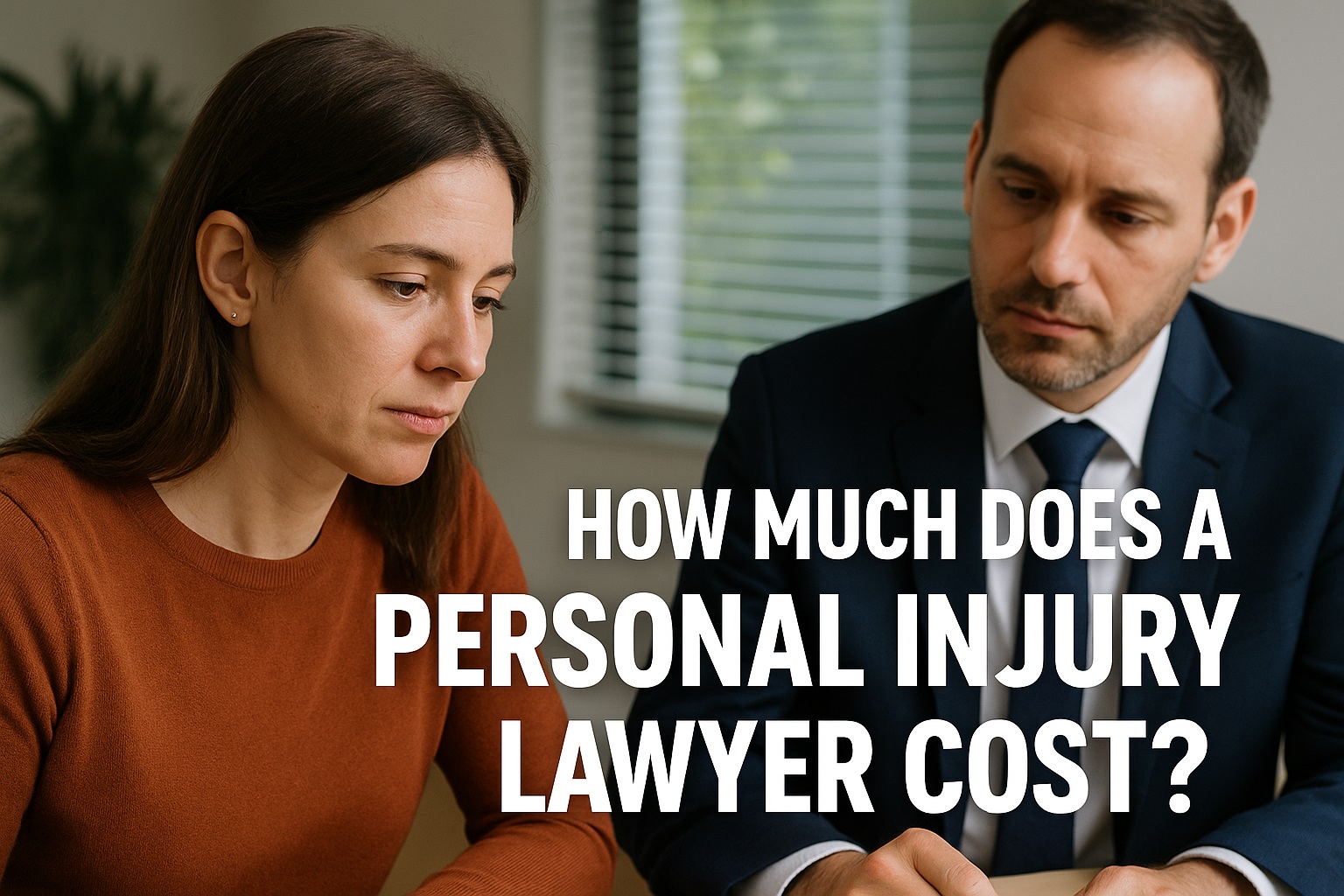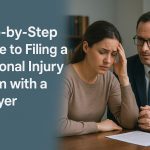Hiring a personal injury lawyer is one of the most important decisions you can make after an accident. You’re entrusting someone to fight for your rights, handle complex negotiations with insurance companies, and secure the compensation you need to cover medical bills, lost wages, and the pain and suffering you’ve endured. But before you commit, you need to understand exactly how much it will cost—and what you’re getting for your money. This comprehensive guide breaks down every possible fee structure, expense category, and hidden cost so that you can make an informed choice and avoid unpleasant surprises down the road.
1. Contingency Fees: The Industry Standard
Most personal injury attorneys work on a contingency fee basis, meaning their payment depends entirely on winning your case. You pay nothing upfront, and the lawyer’s fee is calculated as a percentage of the settlement or jury award. This structure aligns your interests with those of your attorney: they only succeed if you do. Widespread among reputable firms, contingency arrangements remove financial barriers to legal representation, allowing accident victims to pursue justice regardless of their current resources. Because the lawyer advances the costs of litigation—experts, court fees, depositions—you can focus on recovery while the firm handles the complexities of your claim. It’s essential, however, to review the fee agreement carefully, as the percentage may vary depending on whether the case settles pre-suit, post-filing, or on appeal.
2. Typical Percentage Ranges
Contingency fees vary by jurisdiction, case complexity, and stage of resolution. In straightforward claims resolved before lawsuit, rates often range from 25% to 33.3%. If your attorney must file suit and litigate through trial, the percentage may increase—commonly between 33.3% and 40%. For appeals or specialized matters involving multiple expert witnesses, some firms charge up to 45%. These graduated scales reflect the added work, risk, and time investment required for more complex litigation. When negotiating your fee agreement, ask for clear thresholds: at what point does the percentage increase, and by how much? Ensure the contract spells out the rates for each phase so that you know exactly what to expect at every milestone.
3. How the Percentage Is Applied
Suppose you agree to a 33% contingency fee for pre-suit settlements and 40% for resolutions post-filing. If your case settles for $60,000 before suit, your attorney’s fee is $19,800 (33%). But if your lawyer files suit and negotiates a $90,000 settlement, your fee becomes $36,000 (40%). Remember that fees are typically calculated on the gross recovery before deducting expenses; some firms deduct costs first, then apply the percentage, which can significantly affect your net award. Always clarify with your attorney whether the contingency applies to the gross award or the net after expenses, and request examples in writing.
4. Out-of-Pocket Costs and Expenses
Beyond the attorney’s contingency fee, your case may incur “out-of-pocket” costs—expenses the lawyer advances on your behalf but seeks reimbursement from the recovery. These can include court filing fees, process servers, court reporter fees for depositions, expert witness retainers, medical record retrieval charges, investigator expenses, and travel costs. Some firms absorb minimal administrative costs, while others require you to repay all advances even if you do not win. It is crucial to obtain a detailed list of potential expenses at your initial consultation, including typical ranges. Insist on a written “cost advance” policy that specifies which expenses the firm pays upfront, which you must fund, and how repayment is handled.
5. Alternative Fee Arrangements
While contingency fees dominate the personal injury field, some attorneys offer alternative or hybrid billing models tailored to specific circumstances. One such arrangement is a flat fee for discrete services, often used in minor claims where liability is undisputed and damages are limited. For example, if you have a straightforward slip-and-fall case with only property damage, an attorney might quote a flat $1,200 to negotiate with the insurer and resolve the claim without litigation. This cap protects you from escalating costs, but typically covers only negotiation and settlement preparation—additional fees apply if the case proceeds to court. Another option is an hourly rate arrangement, which you might encounter if liability is clear but damages require extensive expert analysis, such as in complex medical-malpractice or product-liability suits. Under this model, you pay a retainer (e.g., $5,000) and an hourly rate (e.g., $250–$400/hour). The lawyer invoices you monthly against the retainer for time spent on depositions, drafting pleadings, and corresponding with experts. Once the retainer is exhausted, you replenish it. Hourly billing offers transparency about the work performed but shifts financial risk to you—if the case drags on, your outlay may exceed what you might have paid under a contingency arrangement. Before agreeing to any alternative fee, weigh your tolerance for financial risk, the predictability of your damages, and how actively you wish to manage litigation costs.
6. Negotiating and Reviewing Your Fee Agreement
Even when presented with a standard contingency contract, you have the leverage to negotiate more favorable terms—especially if your case has exceptional merits or high-value prospects. Before signing, examine every provision:
- Fee Percentage Across Phases: Insist that the same percentage apply whether the case settles before or after filing suit unless the complexity of litigation justifies a modest increase (e.g., +3–5%).
- Expense Advances vs. Reimbursement: Seek a cap on certain overhead expenses—such as photocopying, postage, or investigator travel—so you’re not surprised by a $1,500 courier bill. Clarify whether these costs are deducted before or after the attorney’s percentage is applied.
- Success Benchmarks: If your claim is extremely strong (e.g., undisputed liability on catastrophic injury), propose a tiered fee structure that rewards early settlement: 30% if resolved within six months, 33% thereafter.
- Termination Clauses: Understand how you or the firm can withdraw. Confirm that, should you change lawyers midstream, you owe only the percentage on work performed and documented expenses, not the full contingency on future recovery.
- Lien Negotiation: If you owe medical providers or have health-insurer liens, ask your attorney to negotiate reductions. A skilled lawyer can often persuade hospitals to accept 50–70% of billed charges, preserving more of your net award.
By reviewing these terms with a critical eye—and, if possible, consulting another attorney to benchmark rates—you ensure transparency, avoid misunderstandings, and secure a partnership focused squarely on maximizing your recovery.
7. Maximizing Your Net Recovery
Securing the highest gross settlement is only half the battle; what matters most is your net recovery after fees and costs. A savvy personal injury lawyer will deploy several strategies to protect your bottom line:
- Medical Liens and Subrogation: Lawyers adeptly negotiate with health-insurers and government programs (e.g., Medicare, Medicaid) to reduce subrogation claims, often by demonstrating your financial hardship or emphasizing uncertainty in long-term care costs.
- Structured Settlements: For large awards, structuring payments over time can reduce immediate taxation and align disbursements with ongoing medical needs. While structured settlements involve setup fees, they often save you money compared to lump-sum taxes and minimize wasted portions on short-term spending.
- Fee Offsets: Some attorneys agree to offset their fee against reduced medical bills they negotiate—effectively trading a lower percentage for a higher net award. For instance, agreeing to a 30% fee in exchange for the attorney’s success in slashing your $100,000 medical bill to $60,000 results in an $18,000 fee on $140,000 gross, versus $33,000 on $100,000.
- Alternative Dispute Resolution (ADR): Engaging in mediation or arbitration early can trim litigation costs and court fees. Lawyers experienced in ADR tactics prepare you for negotiation psychology, draft effective demand letters, and position you favorably for binding or nonbinding resolution without incurring full trial expenses.
By coupling aggressive settlement demands with diligent cost management—and leveraging pretrial devices like mediation—your attorney maximizes the proportion of the award that lands in your hands rather than disappearing into legal and medical bills.
Conclusion
Understanding the true cost of legal representation empowers you to select the right personal injury lawyer and negotiate terms that align with your financial goals. Whether you choose a contingency fee, flat fee, or hourly arrangement, insist on crystal-clear contracts, phase-specific percentages, and transparent expense policies. A top-tier attorney not only fights vigorously for the highest award but also leverages medical-billing negotiations, lien reductions, and structured settlements to safeguard your net recovery. By partnering with counsel who prioritizes both gross results and cost-efficiency, you ensure that your legal victory translates into real, lasting financial security as you rebuild your life.








